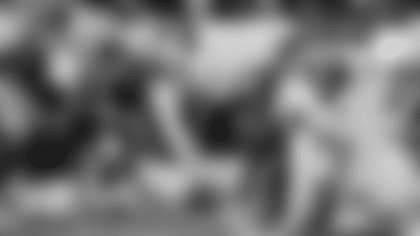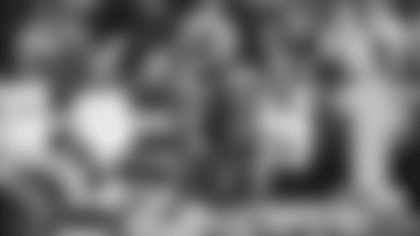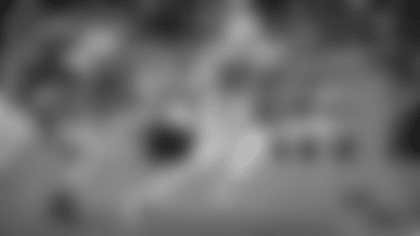GREEN BAY – No fans.
Yeah, it's gonna be weird. But no fans is certainly better than no games, which seemed like a distinct possibility six months ago.
The fact that the Packers-Vikings 2020 opener has arrived, on time no less, creates a combined sense of relief and excitement, along with the desire for stadiums to be rocking again. It's natural to feel greedy, yet anything more right now would feel like gravy.
The official attendance on Sunday at U.S. Bank Stadium will be zero, a franchise "record" that'll be matched next week at the home opener and perhaps several more times this year, and it'll stand forever.
Here we thought the modern-day anomaly would be last year's visit to Los Angeles, where only 25,435 could fit into a soccer stadium, the Chargers' temporary home.
Before that, just to find a Packers game with an official attendance of less than 50,000, you have to go back more than a quarter century, to 1994. Remember the Monday night Halloween monsoon at Soldier Field in Chicago? The brave-soul total for that epic evening was 47,381.
Prior to last year, the most recent sub-30,000 game was all the way back in 1988, when there were two – at Atlanta (29,952), at Detroit (28,124). The year before, during the '87 players' strike, a mere 13,911 showed up at the Metrodome for Packers-Vikings, the first of three games involving replacement players.
Outside of the strike, the last time less than 20,000 witnessed a Packers game was in December 1985, the famous Snow Bowl vs. Tampa Bay at Lambeau Field – 19,856. That's about how many snowflakes were stuffed into Bucs QB Steve Young's facemask in that iconic picture.
Smaller than that? Go back to 1974, again at Atlanta in an obviously forgettable regular-season finale for both clubs (10,020). That's the smallest crowd for any Packers game since the early 1950s, where some four-digit attendance figures exist.
From a football perspective, what everyone is wondering is how much the absence of fans will affect home-field advantage. In that vein, the Packers opening the season at a division rival's indoor venue could provide an early barometer.
It'll cut both ways, because the Packers certainly fed off the home crowd during successful runs at Lambeau, but with five of Green Bay's eight away games being played inside this year (Minnesota, New Orleans, Houston, Indianapolis, Detroit), limited to no fans might help the Packers on the road more than it hurts them at home.
With the league setting a limit of 70 decibels for the ambient crowd noise being piped into fan-less stadiums, Packers quarterback Aaron Rodgers said he doesn't expect to have to use the silent count on Sunday in Minneapolis. If that's true, and if it carries over to other indoor road venues as the season goes along, it could help with using his cadence to draw the defense offside and create a free play.
That's an element to his game almost exclusively relegated to home contests. But even if he doesn't draw the pre-snap penalties, having the cadence as "a weapon" can still matter.
"It's on their minds," Rodgers said. "I think it takes a little bit of the steam and the aggression out of getting off on the snap count."
It can also help accomplished, veteran quarterbacks like Rodgers who prefer to survey the defense at the line of scrimmage and check into the best possible play.
As mentioned, it's a double-edged sword when Matthew Stafford, Matt Ryan, Kirk Cousins, Carson Wentz and others visit Lambeau Field this season, but with Rodgers possessing a greater mastery and comfort level in Head Coach Matt LaFleur's offense in this second year, that could be a trade worth making for the Packers.
For his part, Rodgers this week sounded less concerned about the mechanics of running the offense and more concerned about what'll be revealed when teams review the broadcasts to scout upcoming opponents. No preseason games meant less information being available to future foes. Empty grandstands could mean more.
"There will be new types of strategy involved," Rodgers said. "The metaphorical jazz hands will be the understanding that everything you say now is heard by the TV copy, as you've seen with some of these hot mikes in golf or on the basketball court. There's going to be a need to change code words probably more often than years past.
"I think it's a whole new world. It's like Aladdin here."
Those adjustments should be easy enough to build into the preparation routine. How quickly teams become accustomed to sparse or absent crowds and get comfortable with the feel of a game day in 2020 could factor into their level of success as well.
Week 1 is when it's brand new for everyone.
"We've got to acclimate fast to the environment," LaFleur said. "The environment's going to be something that none of us have really ever experienced before. It's going to be how fast can you adjust and the focus that you bring to the game on Sunday."
Rodgers recalled the last time he played a game of football without a crowd was back in 1999, as a sophomore at Pleasant Valley High in Chico, Calif., when his squad traveled to Grant High in Sacramento on a Saturday morning with no fans present.
"I was jogging the memory banks … It's been, what was that, 21 years since that has happened," he said. "So that will be very strange."
Yes, yes it will. But as strange as empty stadium bowls, decks and tiers will be, they still beat empty fields come Sunday.
Football is back. A season like no other is starting, and that's enough for now.
What will be the impact of no fans in the stands? It's time to find out.















